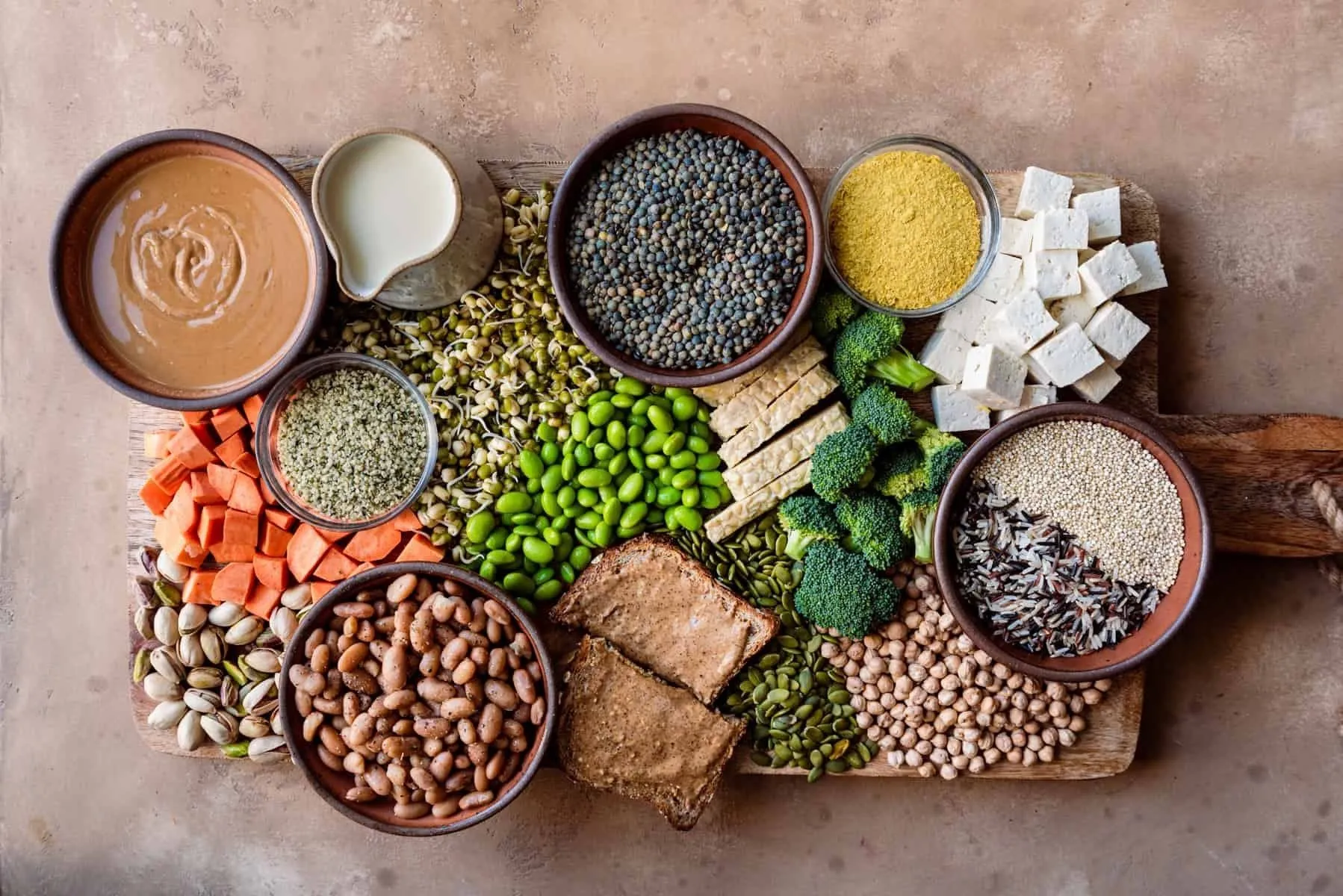
Raw dry seeds of nuts, seeds, legumes and cereals are initially in the “waiting” state of the team, the trigger for them to germinate. In this “sleeping” state, they can be for years, and some for decades. Such a restraining force from germination arises due to enzyme inhibitorsthat are in the warehouse.
An enzyme is a living force that awakens the seed and activates the sprout in it. An inhibitor is a substance that inhibits this physiological process.
When seeds, beans, and nuts come into contact with water for a while, the inhibitors leave the shells. Either wash out, or dissolve, or reduce the concentration. Such “soaked” grains and seeds are also called “activated”. By removing the inhibitors and giving them to the water, the seed acquires simply explosive vitality and is ready to sprout. Young light shoot, completely impregnated with enzymes, enzymes. Such “activated” cereals and nuts, legumes are very easily digested and do not give digestive side effects (bloating from nuts, gas formation from legumes, etc.). Saturated with this awakened enzymatic activity, grains and nuts, beans and seeds increase the nutrient content in themselves from 300% to 1200%. Incredible, right? This is the fermentation process, one of the effects of which is the production of enzymes and micronutrients inside the product. Moreover, inhibitors can negatively affect digestion by blocking their own digestive enzymes that secrete internal organs. Soaked, almost sprouted, and also cooked sparingly after soaking, the products no longer contain inhibitors.

Germination and activation cannot occur in milled cereals. Because during grinding, endosperm, the germ part of the grain, is removed. Roughly speaking, wild or unpeeled rice will germinate when soaked, white polished (basmati, jasmine, round grain - NOT IMPORTANT) rice - no, it is a product devoid of vitality.
What are antinutrients
In general, understanding the process of soaking, activating and even light fermentation should already be enough to be sure that soaked and “activated” nuts, seeds, cereals and legumes and are easier to digest, and will not cause side effects in the gastrointestinal tract, and will be more useful and nutritious than their dry species.
Now many books, articles are written about antinutrients, they are overgrown with myths and horror stories. In fact, a healthy body will cope and correctly digest and simply boiled porridge, stewed legumes or roasted nuts. If they are not the basis of your diet, but are found on the menu 2-3 times a week, there will be no problems. Simply boiling neutralizes inhibitors. If cereals, seeds, legumes (from beans to lentils) form the basis of the diet or you have questions in the work of the gastrointestinal tract and internal organs, it is important to pay attention to improving the absorption of these products. And it's simple.

“Porridge and nuts, legumes have always been eaten, for millennia,” you will say. But to analyze how your ancestors ate, you first need to wind the film back. To inquire, at least look at the recipes of two hundred years old cookbooks. Traditionally, in the cuisines of the world, grains and legumes were always soaked or fermented before making cereals, breads, cakes or other dishes from them. The process of making sourdough bread - the oldest, classic recipe for tofu and tempeh soy cheeses - is always fermentation, soaking chickpeas and lentils for two to three days in the Near East or in Indian cuisine - an example of centuries of wise treatment for grains and legumes.
How and how much to soak products
For soaking, as the right way to revive and facilitate the assimilation of the product, you need only a few simple points: time and water. Soaking neutralizes enzyme inhibitors and triggers the formation of its own, living enzymes that improve the absorption of grains, beans and whole cereals. Roughly speaking, soaking buckwheat, beans or almonds in a bowl before cooking, you simulate the seed getting into moist soil — it wakes up and its nutrients, enzymes for germination become more active.
How to soak:
- rinse nuts, seeds, grains or legumes with water
- place in a saucepan or bowl of clean water
- soak approximately getting to the timing table below
- update the water every 8 hours
- wet soaked, activated grains and nuts can be used for food, prepare grains and beans by temperature-treating them, seeds and nuts can be dried (to preserve all the benefits, preferably no higher than 40C) if you want them to be dry and crispy

asafetida, ginger, black pepper, turmeric and coriander, improve the absorption of legume dishes
We will analyze which inhibitors we deprive the product by soaking it. The studied, roughly speaking, are three: lectins, phytic acid and protease inhibitors.
Protease Inhibitors
Blockers of enzymes (pepsin and trypsin mainly) that break down proteins from meat, poultry, fish, eggs to amino acids. This is highly likely to impair the absorption of proteins from food and often causes a load on the pancreas. Manifestations are bloating, flatulence and heaviness in the stomach.
Sources:legumes (beans, peas, lentils, soybeans, peanuts, chickpeas, beans) and especially rich in soy protease inhibitors.
Antinutrient Deactivation: Soaking, Germination, and Prolonged Cooking. Cooking 80 minutes to 80% reduces inhibitor activity in almost all legumes except soybeans. Soaking completely deactivates inhibitors, particularly in soybeans. Germination (and possibly subsequent fermentation of the product not only removes the inhibitor, but also increases the nutritional value of the product).
Phytic acid
Antinutrient chelate form, in the “dry” state contains metal cations: iron, zinc and magnesium. Able to bind metals inside the body, which can lead to malnourishment for minerals or anemia.
As soon as the seed or grain begins to absorb moisture when soaked or germinated, the enzyme is automatically activated phytase, which breaks down phytic acid, releasing dry contained trace elements that were stored to stimulate plant growth.
The term “activate” nuts and legumes came from here. We read “activate phytase”.
Sources:grains, cereals, seeds, legumes
Antinutrient deactivation: soaking in water or acidified water (with lemon juice, apple cider vinegar)

Lectins
If very coarse, these are sticky substances of protein origin. The stickiness allows them to stick to other cells or substances. The easiest way for them to stick is when there are a lot of carbohydrates or where there are a lot of carbohydrates. Most often, it is the mucous membrane of the gastrointestinal tract. Long clinging to the mucous membrane, lead to inflammation. Often by stimulating the release of histamine (it is also the reaction of food intolerance to the product). And in the bloodstream, lectins are able to mimic our own cells, for which they are often attacked by the immune system (foreign cell = lymphocytes emit antibodies, one of the causes of autoimmune diseases).
Sources: cereals (especially wheat), nuts, seeds, legumes (soy and peanuts especially), milk, syfood, solanaceous (eggplant, tomato, potato, sweet pepper).
Antinutrient deactivation:the toxicity of lectins decreases at a temperature (boiling, quenching, baking) of 80-90%, the part is resistant to heat. With food intolerance - a complete exclusion or rotation (1-3 products somewhere a week, daily).
Industrial soy milk or soy sauce, tofu in chain stores and restaurants is often not prepared according to the traditional recipe with fermentation and soy, without going through soaking and controlled fermentation, remains difficult to digest, like dry beans.
How difficult!
No, not difficult) And I also do not soak cereals and nuts every time. Legumes - everyone, because it also significantly reduces the time of their preparation.
What did you get from:
Fundamentals of Biochemistry and Physiology. But! You should not soak all nuts, seeds, beans and cereals before consumption. But soaking definitely facilitates the process of assimilation of nutrients from them. Also in the composition of freshly raw and soaked cereals, legumes, nuts, many times more important nutrients for us. But the link to the study is below. For example, that



